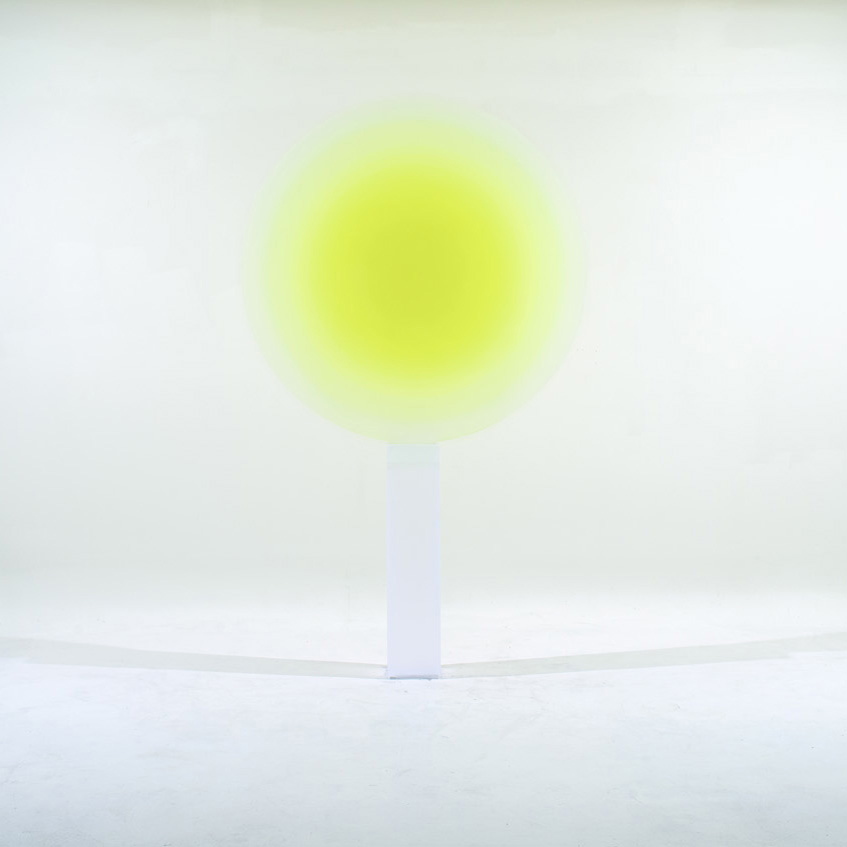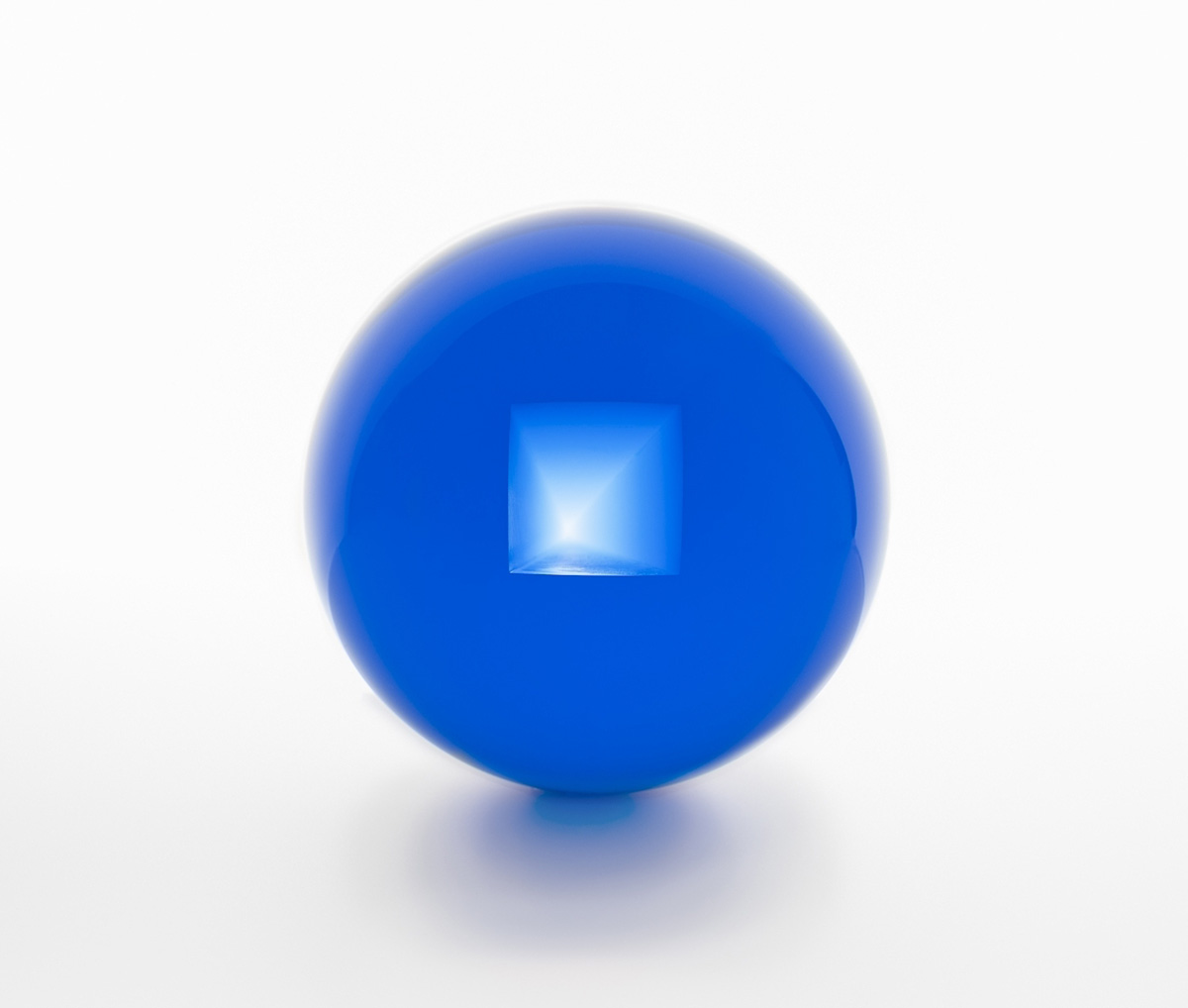ART CITIES: N.York:Helen Pashgian
 After taking up sculpture in the late 1960s, Pashgian became one of Light and Space movement, a group of artists in the Los Angeles area to experiment with new materials such as fiberglass, resin, plastic, and coated glass. Her signature forms include columns, discs and spheres in delicate and rich coloration, often with an isolated element suspended, embedded or encased within. Pashgian’s innovative application of industrial epoxies, plastics and resins effect semi-trans- lucent surfaces that simultaneously filter and contain illumination. Activated by light, these sculptures resonate in form and spatiality, both inner and outer.
After taking up sculpture in the late 1960s, Pashgian became one of Light and Space movement, a group of artists in the Los Angeles area to experiment with new materials such as fiberglass, resin, plastic, and coated glass. Her signature forms include columns, discs and spheres in delicate and rich coloration, often with an isolated element suspended, embedded or encased within. Pashgian’s innovative application of industrial epoxies, plastics and resins effect semi-trans- lucent surfaces that simultaneously filter and contain illumination. Activated by light, these sculptures resonate in form and spatiality, both inner and outer.
By Efi Michalarou
Photo: Lehmann Maupin Gallery Archive
Helen Pashgian presents “Spheres and Lenses”, her first solo exhibition in New York since 1971 and her first with Lehmann Maupin in the United States. This exhibition features a series of new lens and sphere sculptures, expanding on the bodies of work for which she is best known. Born in Pasadena, Pashgian is widely recognized as a pioneer and leading member of the 1960s Light and Space movement in Southern California, which explored Minimalism with a close eye toward the interaction between light and space. Over the course of her career, Pashgian has produced an extensive oeuvre of innovative sculptures―vibrantly colored columns, discs, and spheres that engage light, color, and form in wholly unique ways. Often featuring an isolated minimal shape that appears suspended, embedded, or encased within, these works are characterized by their semi-translucent surfaces that somehow both redirect and contain illumination. Using an innovative application of industrial epoxies, plastics, and resins to create her ethereal surfaces, Pashgian refers to her sculptures as “presences” in space that viewers must circumnavigate to fully experience. Every vantage point invites an observation of change of color and light shifting, internal objects appearing and receding a phenomenon of visual curiosity and pleasure. During the 1960s Pashgian created her first sphere-like sculptures that inspired her career-long investigation of how light changes as it passes through a translucent object. Since these early egg-shaped epoxy resin experiments, Pashgian has created an expansive series of brightly colored monochrome and multicolored spheres that contain a suspended element. These embedded “objects” challenge our understanding and assumptions around perception, causing the brain to question what the eye is seeing. As light enters each sculpture, distortions, illusions, refractions, and rainbows occur—a result of the interplay between the light, reflective surfaces, and cast forms inside. Pashgian’s carefully researched choice of color plays a critical role in these effects, as each color reflects and refracts light in dramatically different ways. Trained as an art historian with a focus on Dutch Golden Age painting, Pashigan was inspired by the many landscapes that depict a cool natural light similar to that of Southern California and the calm and composed interiors of Johannes Vermeer, who masterfully rendered light that appeared to emanate from a single source. These paintings continue to inform Pashgian’s fundamental interest in making objects that engage with and expand our understanding of the effects and perception of light. During the late 1960s and early 1970s Pashgian created a series of circular, disc-like works that she refers to as lenses. These works, both technically and aesthetically challenging, appear as discs of color floating in space, creating the illusion that the sculpture is both floating in front of and simultaneously receding into the wall behind it—an effect similar to watching the sunset on the horizon. The works in this series, which appear to hover just between materiality and immateriality, becoming and dissolving, most clearly illustrate Pashgian’s ability to engage light as a material that alters, changes, and seemingly dematerializes an object. Pashgian began to revisit this series in 2010s, and is now pushing the scale and visual immateriality of these works to their limit, creating seductive optical effects that transfix the viewer. For this exhibition she has created a colossal lens that reaches 60 inches in diameter, the first presentation of a disc of this size in New York since the initial inception of the series in the 1960s. While Pashgian has long gravitated towards experimenting with non-traditional materials, her primary concern has always been to maintain light as the object and subject of her work. In her most recent work, she draws viewers in by creating a range of ethereal, visual experiences through her unique ability to manipulate scale, color, materiality, and light.
Photo: Helen Pashgian, Untitled, 2020, Cast epoxy with formed acrylic elements, Diameter 7 inches / 17.78 cm, Photo: Daniel Kukla, © Helen Pashgian, Courtesy the artist and Lehmann Maupin Gallery
Info: Lehmann Maupin Gallery, 501 West 24th Street, New York, NY, USA, Duration: 4/11/2021-8/1/2022, Days & Hours: Tue-Sat 10;00-18:00, www.lehmannmaupin.com


